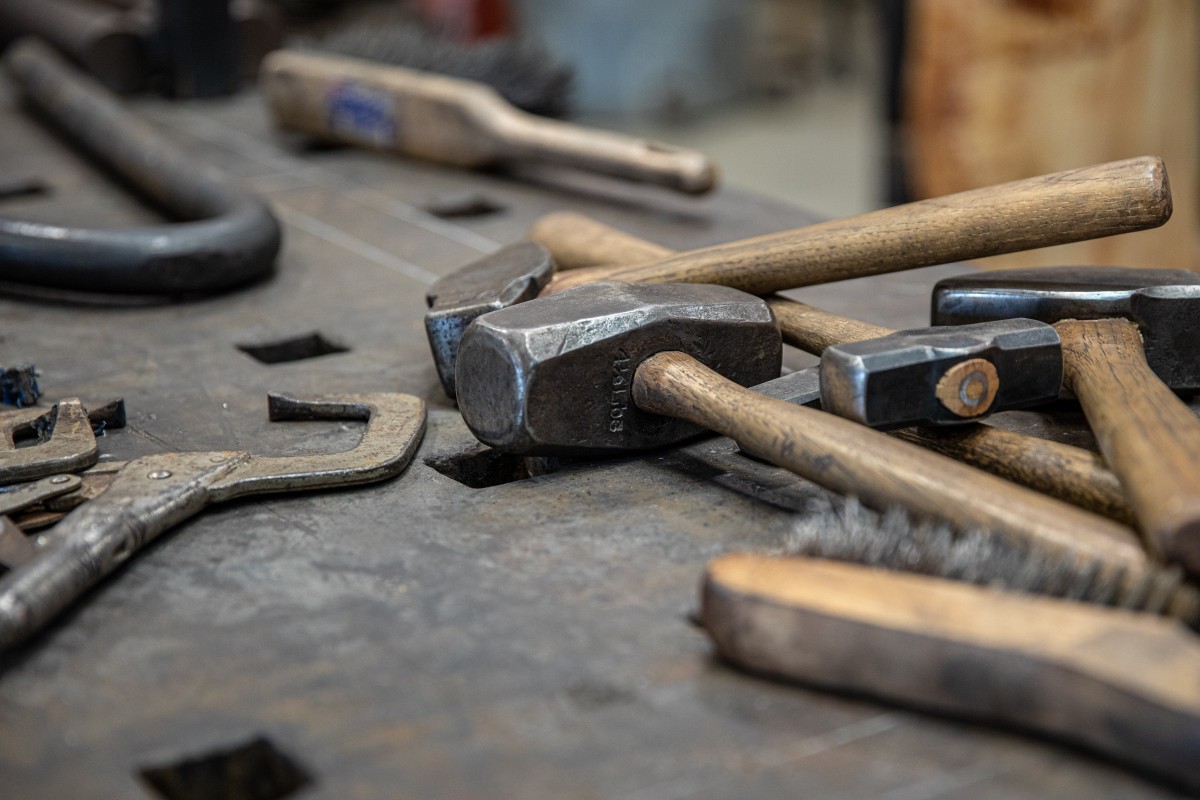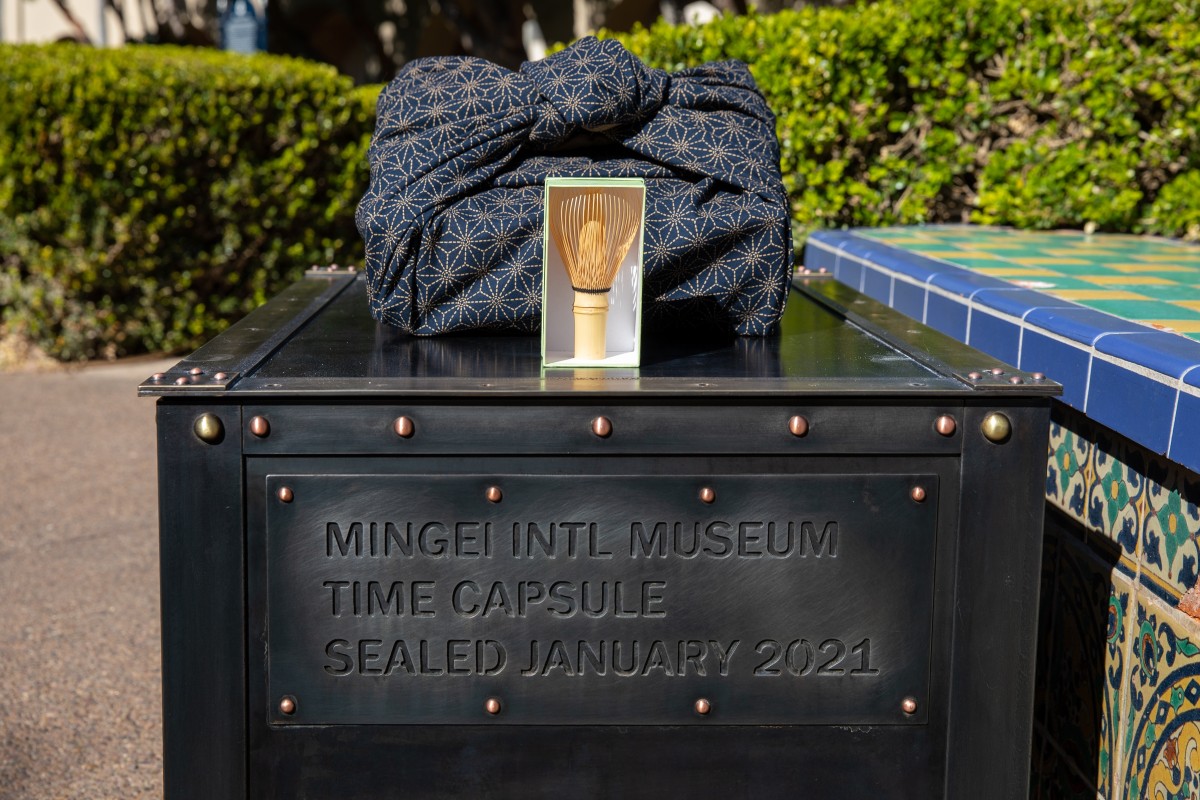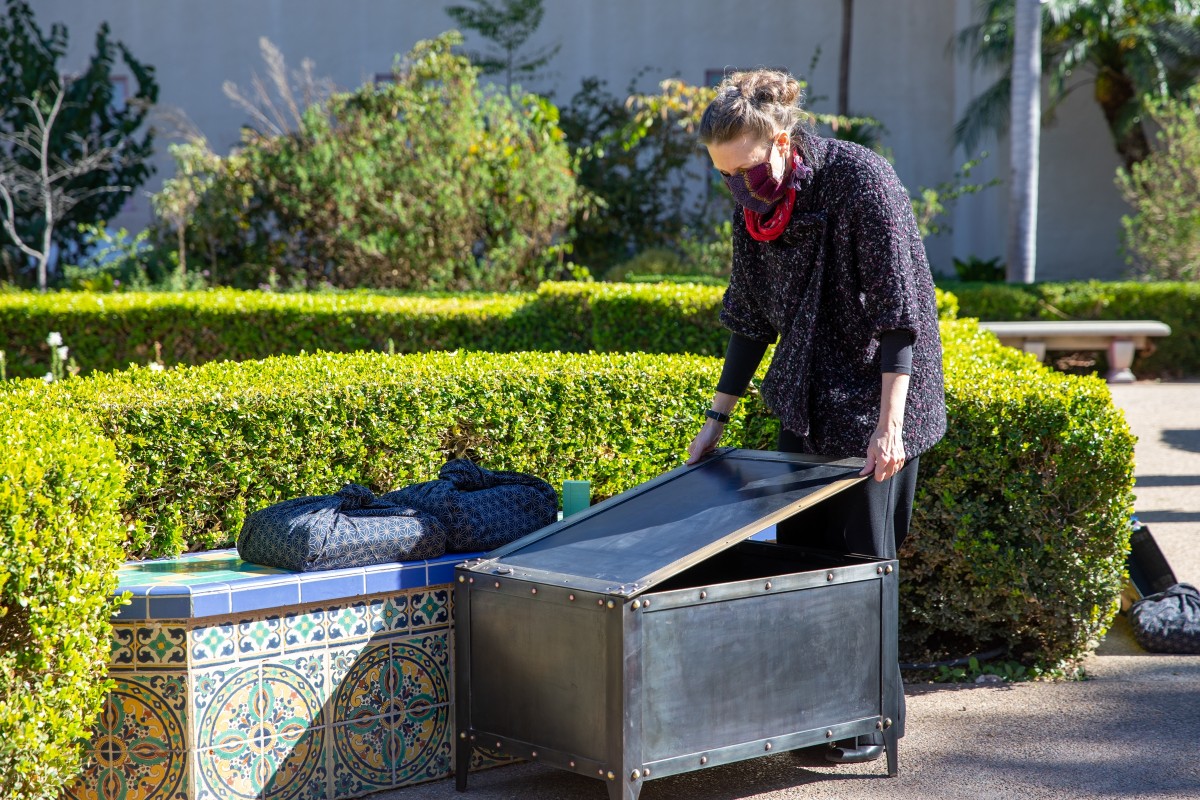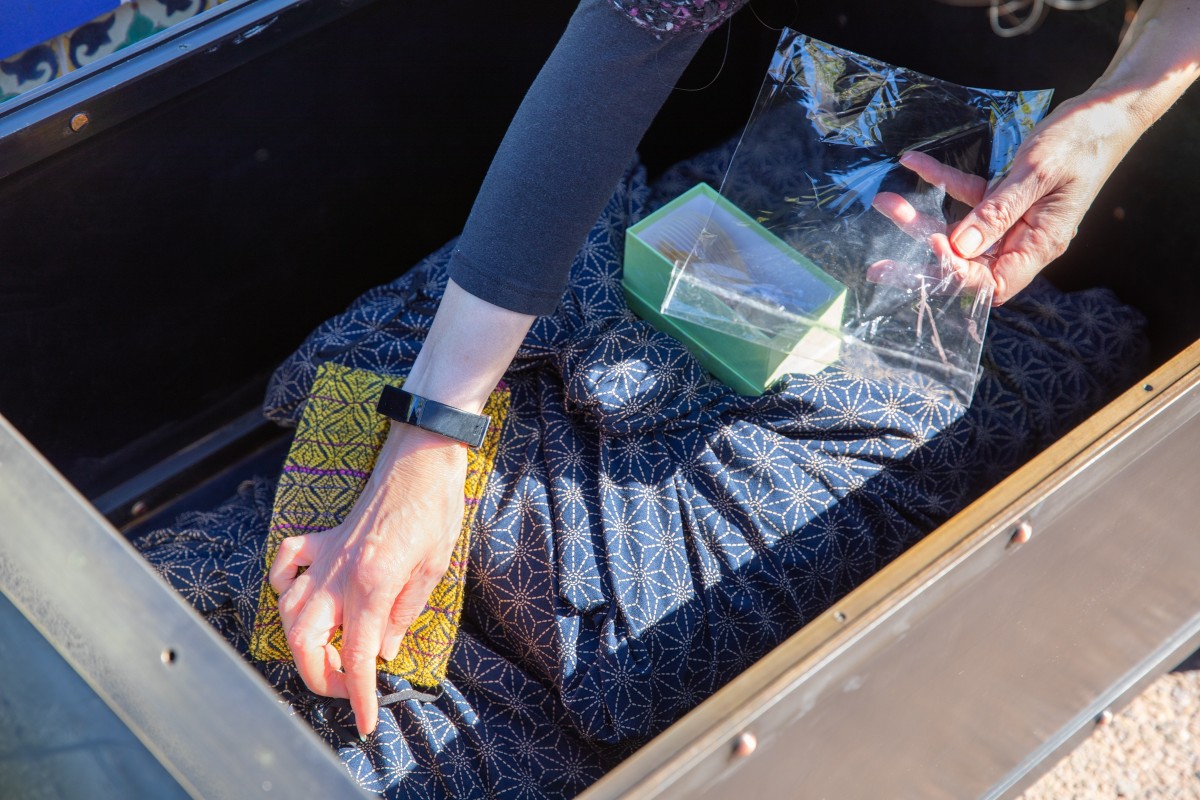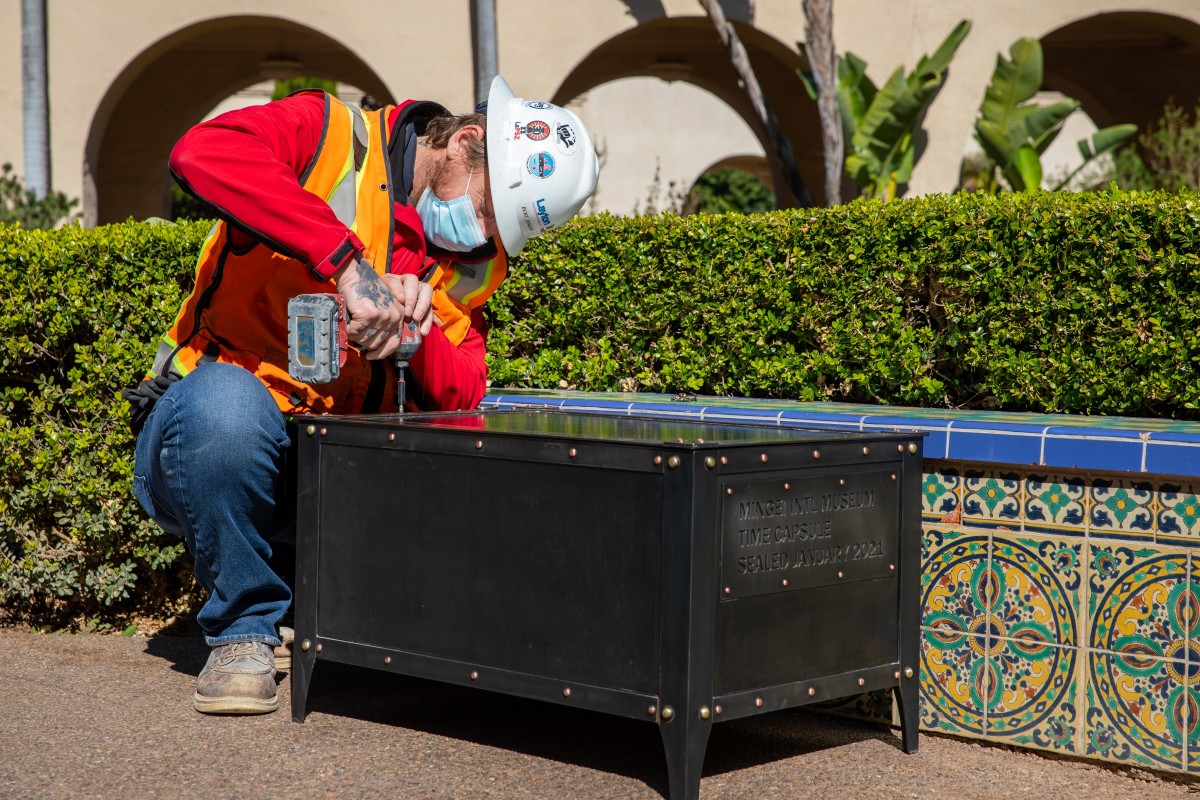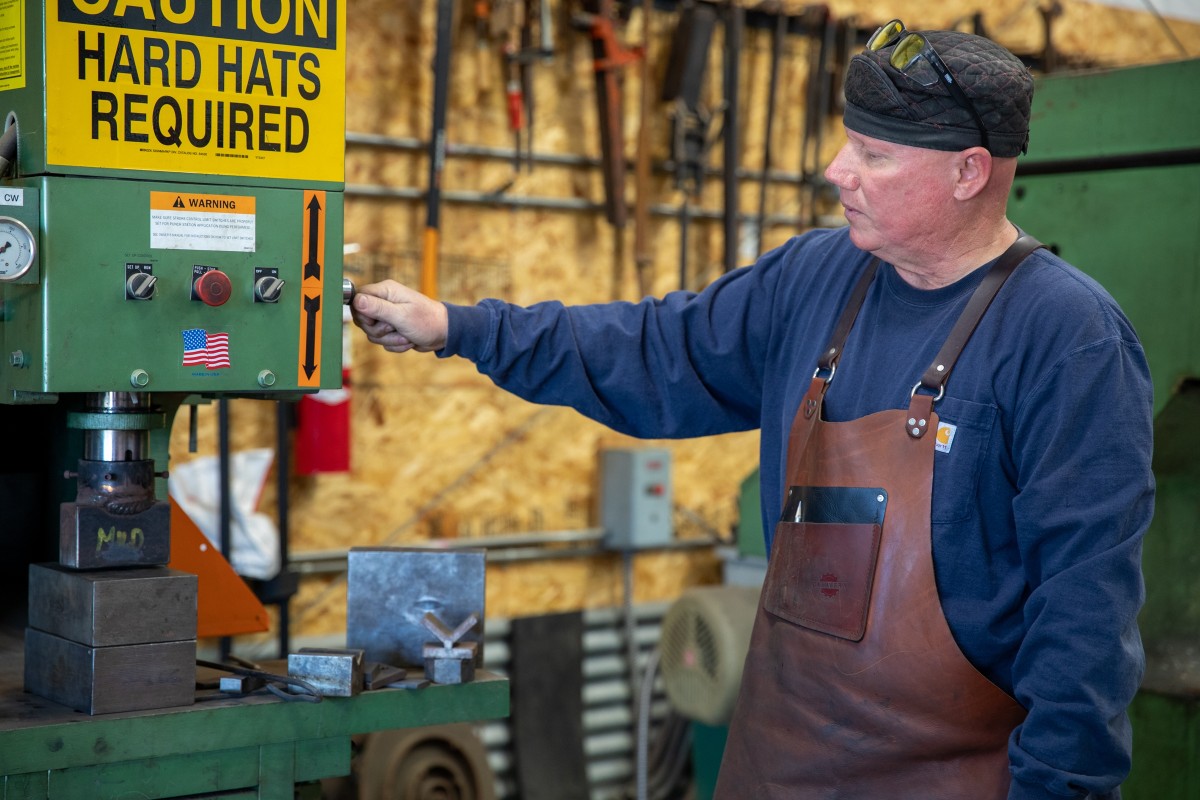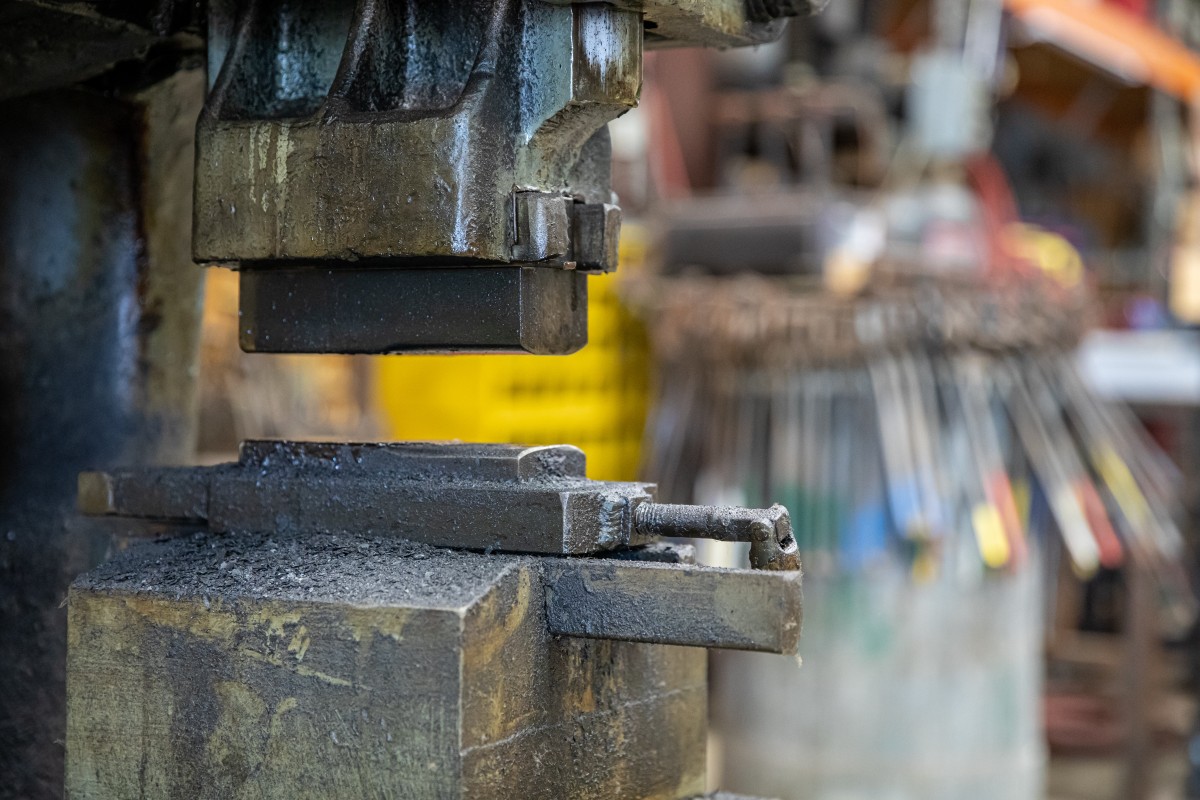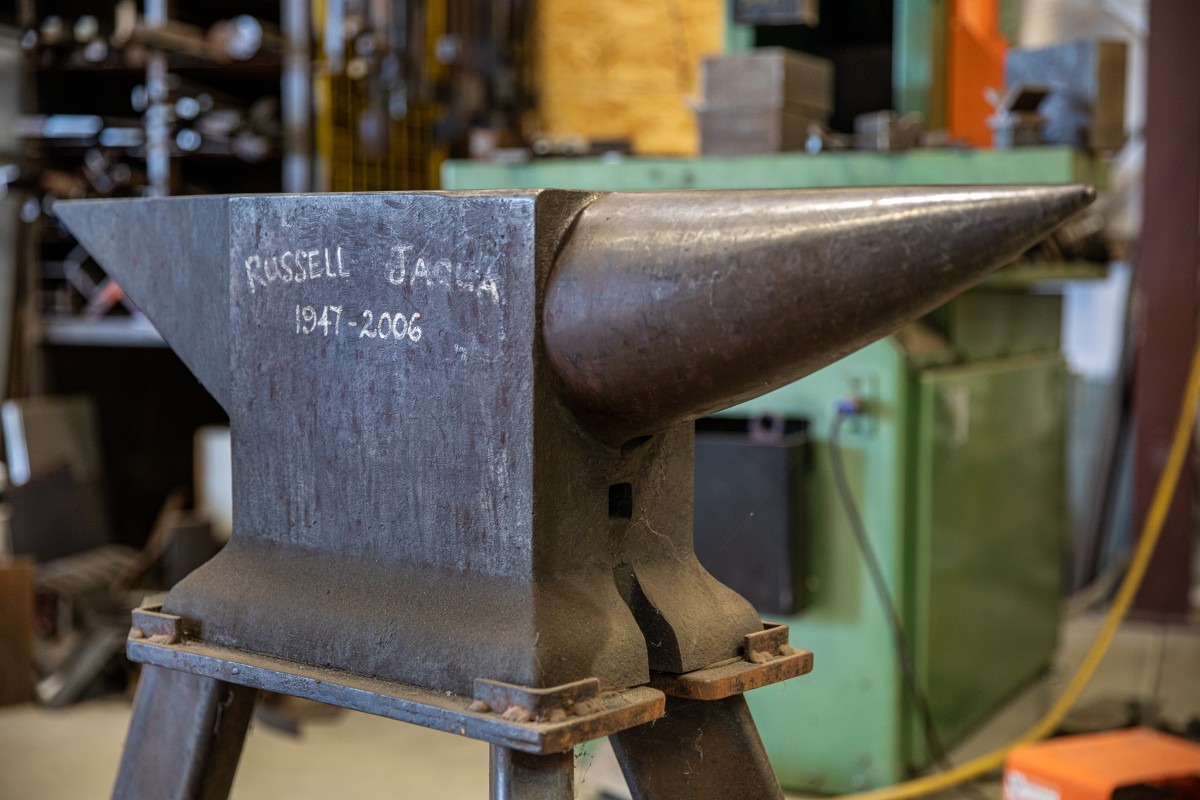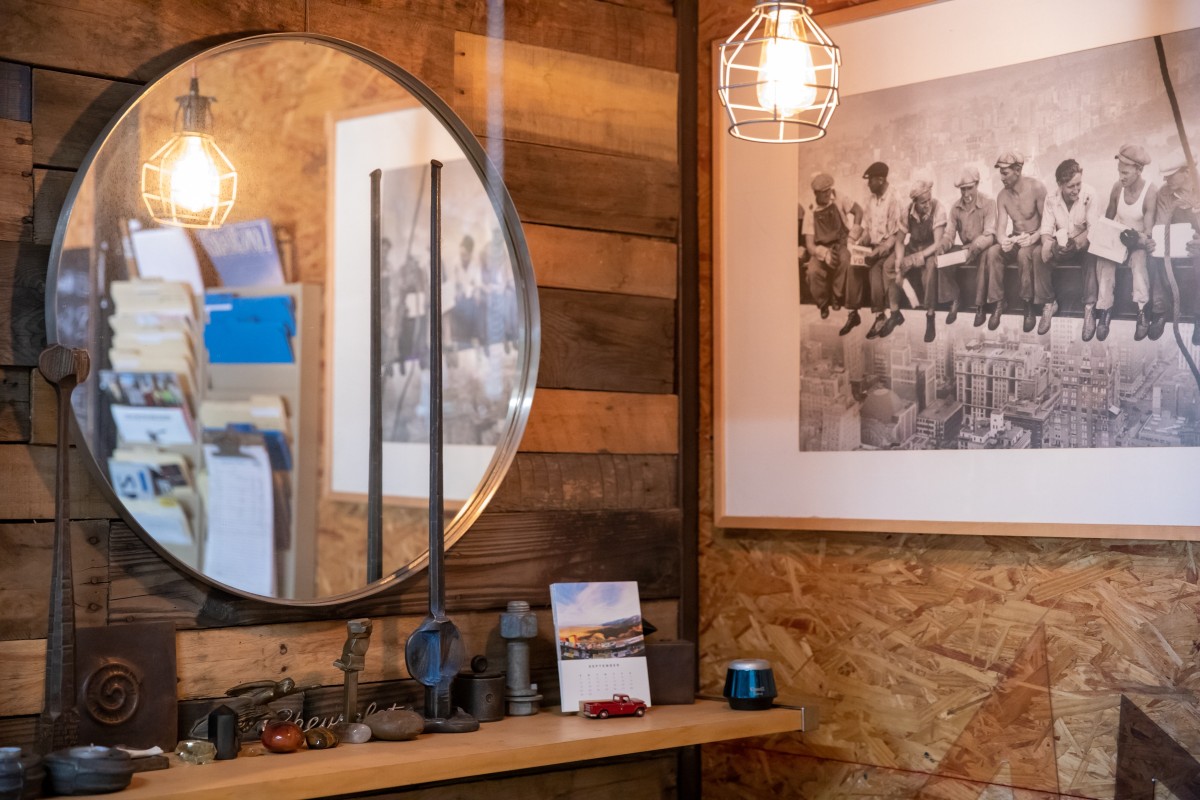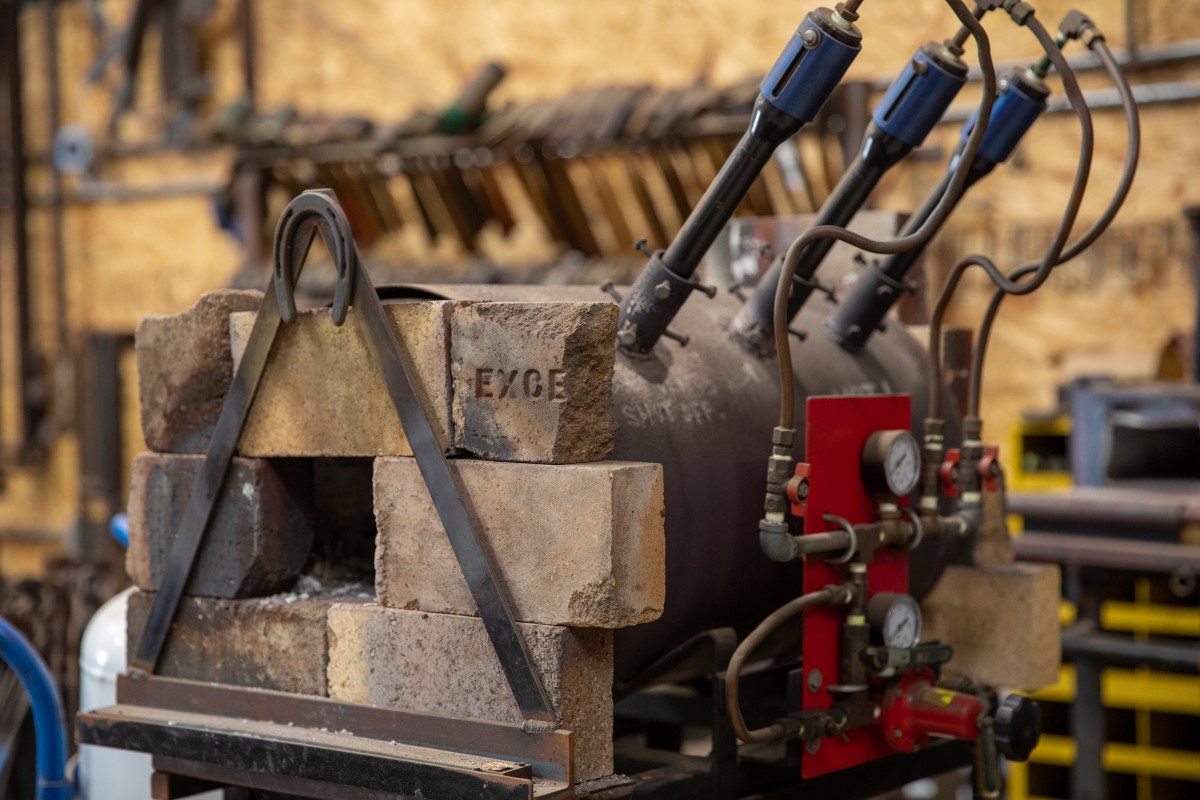For over twenty years San Diego-based architectural and sculptural blacksmith David Browne has been melting metal into unforgettable objects of beauty and function. Most recently, Browne forged a time capsule for the Museum to commemorate its transformative construction project. In a recent interview, Browne shared the process behind making this timeless time capsule and how he came to learn the craft of blacksmithing.
"Watching such a cold, hard, unyielding material, like steel become malleable, much like clay, by just applying fire is incredible."
Your time capsule for the Museum is truly remarkable. Can you tell us a little about how you made it?
Thank you, I appreciate that. The time capsule was mostly fabricated with some forging and set rivets. Blacksmiths have always used rivets. As traditional fasteners, rivets hold things together and have visual appeal as a design element. (Modern welding is functional, but it isn’t pretty.) I try and size the rivet to the application for structural integrity and visual proportion.
I also added a few textural details to the brass trim on top. The process can be described as a high fiddle factor with very precise tolerances, which also requires a lot of holes to line up perfectly. The final dimensions of the time capsule were roughly 14” H x 20” W x 30” L.
Is this the first time capsule you've made?
Yes, it is! And hopefully, it won’t be my last.
How did you arrive at the concept for the time capsule? Were you inspired by anyone or anything?
At this point in my career, I have built up enough of a collection of skills and hot working techniques, that I tend to focus on my own imagination inward rather than being influenced externally. Don’t get me wrong, I still see things that bedazzle and inspire me, but now I strive to interpret and incorporate them through my unique lens.
How do you feel about designing and making something very few people will see?
I love the idea! I think that was a lot of the allure of this project for me. Nearly all of the things that I build will outlive me by magnitudes. I work in steel, brass, and bronze- all long-lasting materials. I’m intrigued by the idea of someone discovering this little treasure cache long after I’ve shuffled off this mortal coil. What will they think? Will it stand the test of time? Will it be repurposed? It is intriguing to think about.
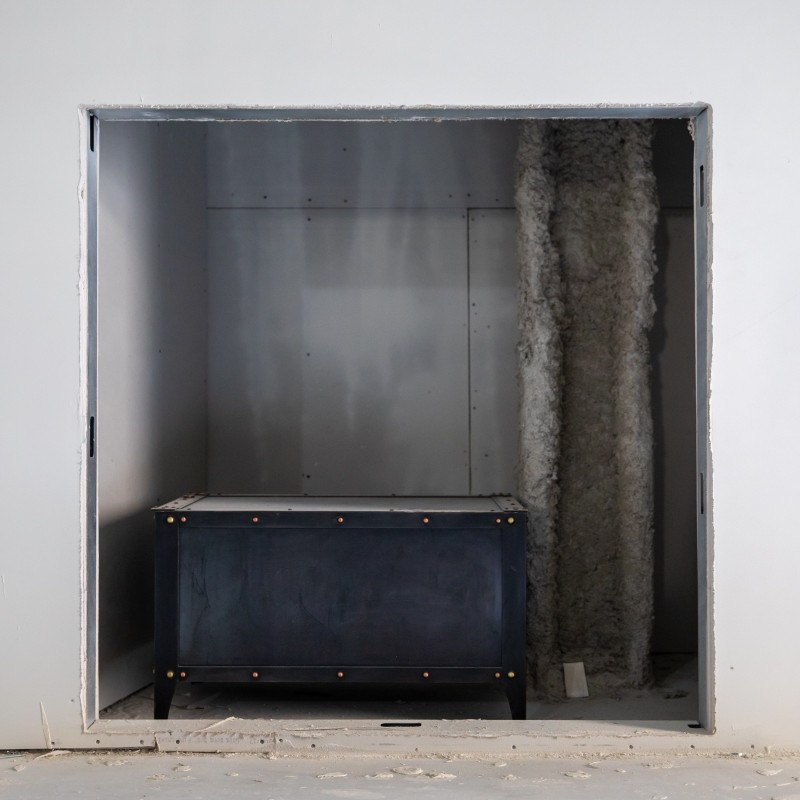
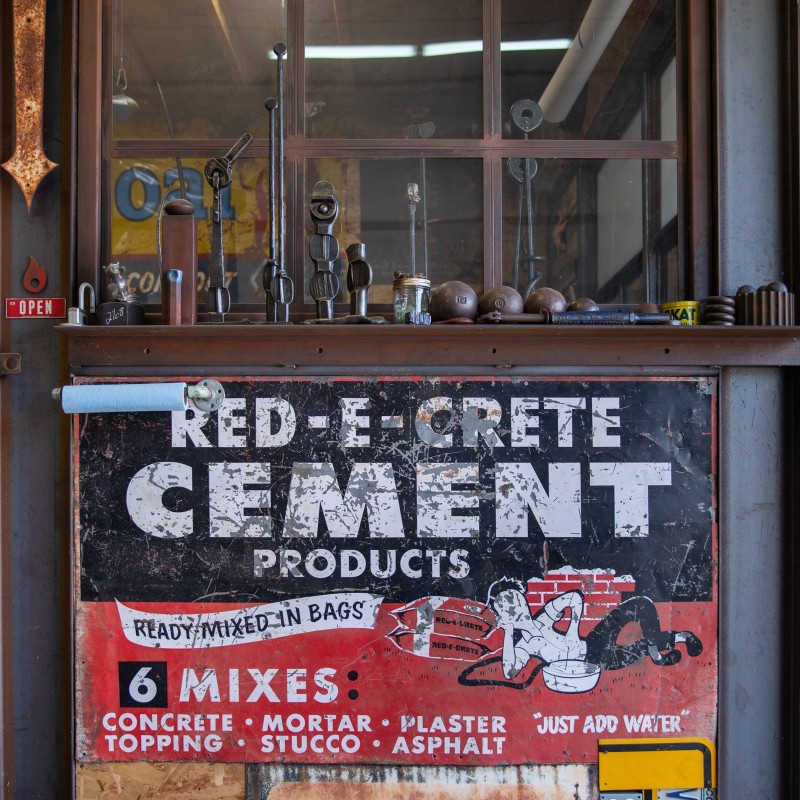
When did you realize you wanted to be a blacksmith? And how did you learn your craft?
It was about twenty years ago, and I remember the exact moment. It all started when I saw someone doing architectural hot work on a KPBS TV program. It was in that instant, like a bolt of electricity, I just knew blacksmithing was what I was supposed to be doing. Immediately after that, I bought a small welder at a yard sale and taught myself how to weld. With my new found welding skills (and I’m using the term “skills” rather loosely), I welded up a propane-powered forge from plans found on the internet and purchased an old 146 lb Peter Wright anvil off eBay. I was able to take blacksmithing classes in Vista and volunteered at the Old Town blacksmith shop. This was before there was YouTube, so I read everything and anything related to blacksmithing that I could get my hands on. I bought hundreds of books and met with several older guys to pick their brains incessantly. I watched, I practiced and I worked at it every spare minute I had. Within a couple of months, I sold my first pot rack and commissions have been nonstop ever since.
At Boise State University you studied ceramics and worked under well-known ceramicist John Takehara. Do you still work in ceramics or does ceramics influence your work in metal?
Ceramics has been and continues to be a huge influence on my forge work. I am drawn to the fire element in both crafts. A good friend of mine, who was also a ceramics major with me at Boise State University, saw some of my metalwork years later and said, “you’re still a potter, just working in metal now”.
What do you love most about blacksmithing?
Definitely the making. There is magic in the forging process. Watching such a cold, hard, unyielding material, like steel become malleable, much like clay, by just applying fire is incredible. Then, when you add some forceful persuasion with a hammer and anvil, an infinite variety of sculptural forms become possible. The process is truly mind-blowing.
